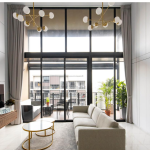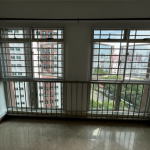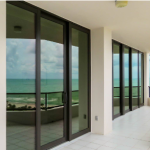Why a Leaky Toilet is a Big Deal in Your HDB Flat
If you’re living in an HDB flat in Singapore, dealing with a leaking toilet is more than just an annoying inconvenience—it’s a problem that can spiral into a costly nightmare. You might notice a small puddle forming around the base of your toilet or damp spots on the ceiling of the flat below you. Most common owner will facing when your downstair neighbour is knocking your unit and complaint about leaking of water to below toilet ceiling.
These are telltale signs of a leak that shouldn’t be ignored.
Let’s start by understanding why your HDB toilet might be leaking and why it’s essential to address the issue promptly.

Common Causes of Toilet Leakage in HDB Flats
Toilet leaks can stem from several issues, some of which might be quick fixes, while others could signal a deeper problem within your bathroom’s infrastructure.
- Worn-Out Seals and Gaskets: Over time, the rubber seals and gaskets that keep your toilet watertight can deteriorate. These components are crucial for preventing leaks around the base of the toilet, where it meets the floor, and at the joints where the WC connects to the toilet bowl. Once these seals wear out, water starts to seep out, leading to a persistent leak.
- Cracked Toilet Bowl or Tank: Ceramic toilet bowls and cistern are durable but not indestructible. A crack, even a hairline one, can allow water to escape every time you flush. This might not be immediately noticeable, but over time, it can cause significant water damage to your floor.
- Leaking Pipes: Pipes that carry water to and from your toilet can develop leaks due to age, corrosion, or poor installation. These leaks can be tricky to spot because the pipes are often concealed behind walls or under floors. If you notice water pooling around your toilet or damp patches on the walls, a leaking pipe could be to blame. There are two type of pipe, one is pressure and one is non-pressure water pipe. For non conceal pipe, most common leaking area will be around the floor trap and waste trap.
- Faulty or Old Water Closet (WC): The water closet, commonly known as the toilet, can develop leaks due to internal components wearing out. The flush valve, fill valve, or other parts might need replacement if they start to malfunction. These leaks often manifest as water trickling into the bowl long after you’ve flushed, wasting water and increasing your utility bill.
- Waterproofing Wear and Tear: One of the most significant issues that homeowners often overlook is the waterproofing layer beneath the bathroom tiles. In HDB flats, waterproofing is a critical component that prevents water from seeping into the concrete slab and causing leaks to the flat below. Over time, this waterproofing layer can degrade, especially if it wasn’t installed correctly during the original construction. A worn-out waterproofing layer can lead to widespread water damage, not just in your bathroom but also in adjacent rooms or the neighboring flat. The life span of waterproofing is mostly 20 years, for aging toilets that beyond the time line, it is advisable to re-do the waterproofing and tiles instead.

The Consequences of Ignoring Toilet Leaks
Ignoring a toilet leak in your HDB flat can have far-reaching consequences. Here’s what you’re risking if you don’t address the issue promptly:
- Water Damage to Your Home: Even a small leak can lead to extensive water damage over time. The water can seep into the floor, damaging the structural integrity of the concrete slab and causing mold and mildew to develop. This not only affects your bathroom but can also spread to adjacent rooms, damaging floors, walls, and ceilings.
- Damage to Neighboring Flats: In an HDB setting, your bathroom is often directly above another flat. A leak that you ignore could eventually seep through to the ceiling of your downstairs neighbor, causing unsightly stains, mold growth, and even structural damage. This could lead to disputes with your neighbors and potential legal liabilities.
- Increased Utility Bills: A leaking toilet can waste a significant amount of water, leading to a noticeable increase in your utility bills. The constant dripping or trickling of water adds up over time, costing you money that could be better spent elsewhere.
- Health Hazards: Standing water and persistent dampness are breeding grounds for mold and mildew, which can pose serious health risks to you and your family. Mold spores can trigger allergies, respiratory issues, and other health problems, particularly in young children, the elderly, and those with pre-existing health conditions.
Given these risks, it’s clear that addressing a toilet leak is not something you should put off.
Temporary Solutions to HDB Toilet Leakage
If you’ve identified a leak in your HDB toilet, you might be tempted to try a temporary fix before committing to a more extensive repair. While these solutions won’t permanently solve the problem, they can help mitigate the damage until you’re able to arrange for professional repairs.
- Tightening Bolts and Replacing Seals: If the leak is coming from the base of the toilet or where the tank connects to the bowl, you might be able to stop it by tightening the bolts or replacing worn-out seals. These are relatively simple tasks that you can do yourself with basic tools and replacement parts available at most hardware stores.
- Applying Plumber’s Putty or Silicone Sealant: For small cracks or leaks around the base of the toilet, plumber’s putty or silicone sealant can be used as a temporary fix. Apply the putty or sealant to the area where the leak is occurring, and allow it to cure. This will create a temporary waterproof barrier, but keep in mind that it’s not a long-term solution.
- Shutting Off the Water Supply: If the leak is severe and you’re unable to stop it with the above methods, shutting off the water supply to the toilet can help prevent further damage. This will stop water from flowing into the toilet, giving you time to arrange for professional repairs.
- Using Leak Detectors: If you’re concerned about leaks developing while you’re away from home, consider installing a leak detector. These devices can alert you to the presence of water in areas where it shouldn’t be, allowing you to take action before the leak causes significant damage.
- Temporary Pipe Repairs: If the leak is due to a damaged or leaking pipe, you can use pipe repair tape or a pipe clamp as a temporary solution. These products are designed to seal off leaks in pipes, giving you time to schedule a professional repair. However, they’re not a permanent fix and should only be used as a stopgap measure.
- Non-serious water leakage : Re-do non hacking type of waterproofing which to temporary seal off the surface water to below unit. It can be clear transparent waterproofing, epoxy paint coating or overlay with tile with waterproofing coating below.

Overhaul Solutions: Renovating Your HDB Bathroom
While temporary fixes can buy you some time, they won’t address the root cause of the leak. In many cases, a more comprehensive solution is needed to ensure your bathroom is fully leak-free and protected from future damage. This often involves renovating your entire bathroom, including new tiling and waterproofing.
- Replacing Worn-Out Components: During the renovation, all worn-out components should be replaced. This includes the toilet itself, as well as any faulty pipes, seals, and gaskets. Upgrading to high-quality fixtures can help prevent future leaks and improve the overall functionality of your bathroom.
- Installing New Waterproofing: One of the most critical steps in a bathroom renovation is installing a new waterproofing layer. This involves removing the old tiles and waterproofing membrane, repairing any damage to the concrete slab, and then applying a new waterproofing membrane before re-tiling. This will create a watertight barrier that prevents water from seeping into the floor and causing damage to the structure of your home or your neighbor’s flat below.
- Upgrading the Concealed Piping: Many older HDB flats have exposed pipes, which are more prone to leaks and damage. During your renovation, consider upgrading to new piping.
- New Tiling: After the waterproofing is installed, new tiles are laid. Choosing high-quality, non-porous tiles can help further protect your bathroom from water damage. The tiles should be installed with a slight slope towards the floor drain to ensure proper drainage and prevent water from pooling.
- Final Touches: The final step in your bathroom renovation might include upgrading other features like the sink, shower, and lighting. These improvements can enhance the functionality and aesthetic of your bathroom, making it a more enjoyable space to use.

Finding the Right Contractor: Why 9reno.com is Your Best Bet
When it comes to something as critical as a toilet leak, you want to make sure you’re working with the best. That’s where 9reno.com comes in. We specialize in HDB toilet leakage repair and offer a range of services to ensure your bathroom is leak-free and up to HDB regulations.
Here’s what sets 9reno.com apart:
- Expert Knowledge of HDB Regulations: We understand the unique requirements and regulations that come with HDB flats. Our team ensures that all repairs and renovations are fully compliant with HDB standards, so you don’t have to worry about any regulatory issues down the road.
- Comprehensive Services: Whether you need a quick fix, a temporary solution, or a full-scale bathroom renovation, we’ve got you covered. Our services are tailored to meet your specific needs, ensuring that you get the best possible outcome.
- Quality Workmanship: We pride ourselves on delivering top-quality workmanship that stands the test of time. From waterproofing to tiling, we use only the best materials and techniques to ensure your bathroom is built to last.
- Transparent Pricing: We believe in transparent pricing with no hidden fees. You’ll know exactly what to expect before any work begins, so there are no surprises along the way.
- Customer Satisfaction: Our commitment to customer satisfaction is second to none. We work closely with you







